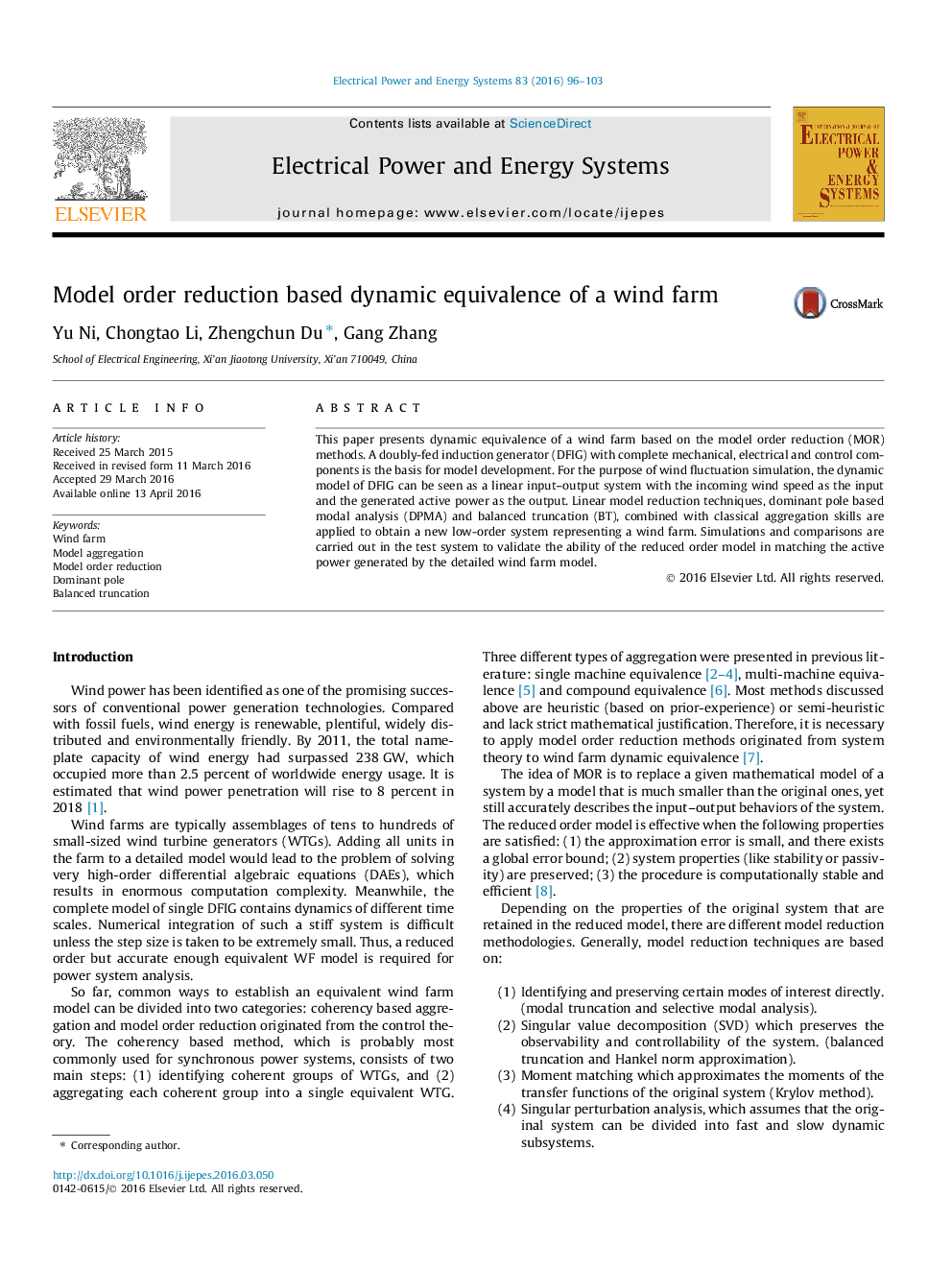| Article ID | Journal | Published Year | Pages | File Type |
|---|---|---|---|---|
| 400318 | International Journal of Electrical Power & Energy Systems | 2016 | 8 Pages |
•The dynamic equivalence of a wind farm using model order reduction is presented.•Dominant pole based modal analysis (DPMA) and balanced truncation (BT) methods are adopted and compared.•The reduced models obtained by the two methods achieve an acceptable accuracy.•BT is proved to be more effective than DPMA in wind farm modeling.
This paper presents dynamic equivalence of a wind farm based on the model order reduction (MOR) methods. A doubly-fed induction generator (DFIG) with complete mechanical, electrical and control components is the basis for model development. For the purpose of wind fluctuation simulation, the dynamic model of DFIG can be seen as a linear input–output system with the incoming wind speed as the input and the generated active power as the output. Linear model reduction techniques, dominant pole based modal analysis (DPMA) and balanced truncation (BT), combined with classical aggregation skills are applied to obtain a new low-order system representing a wind farm. Simulations and comparisons are carried out in the test system to validate the ability of the reduced order model in matching the active power generated by the detailed wind farm model.
